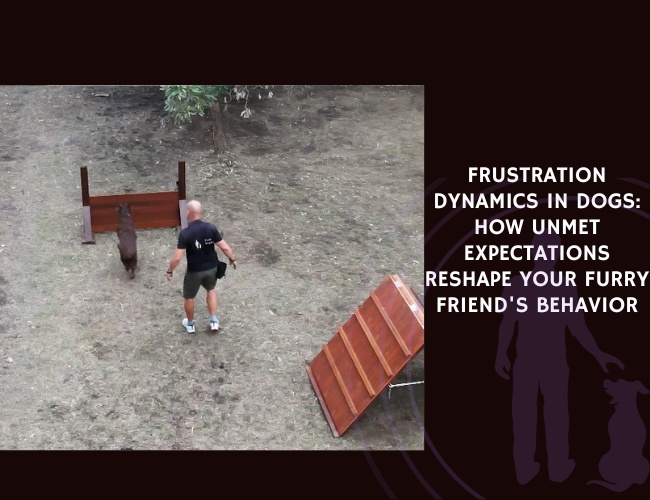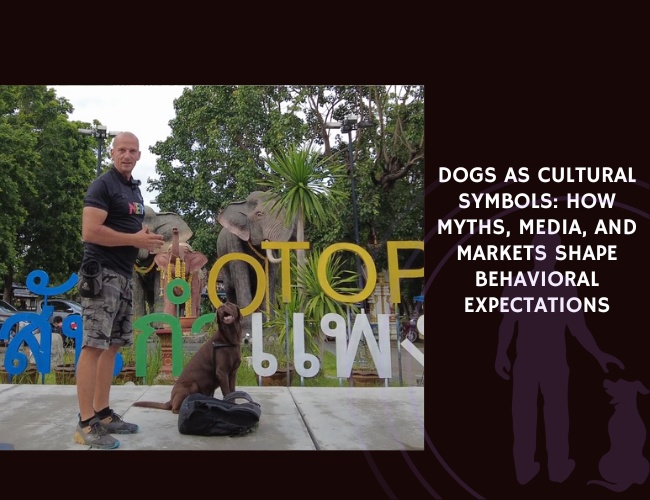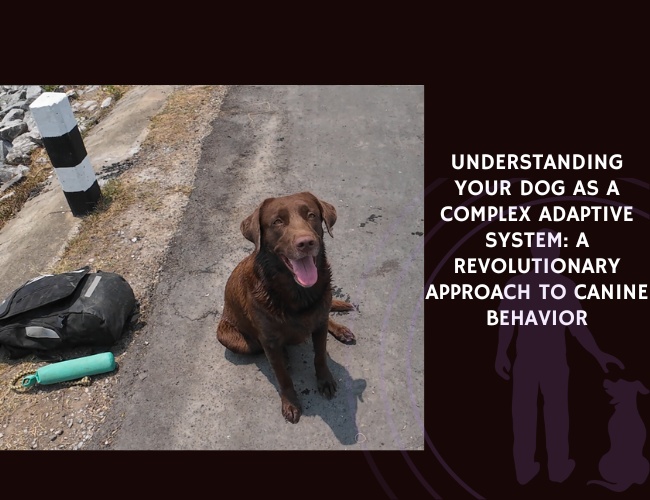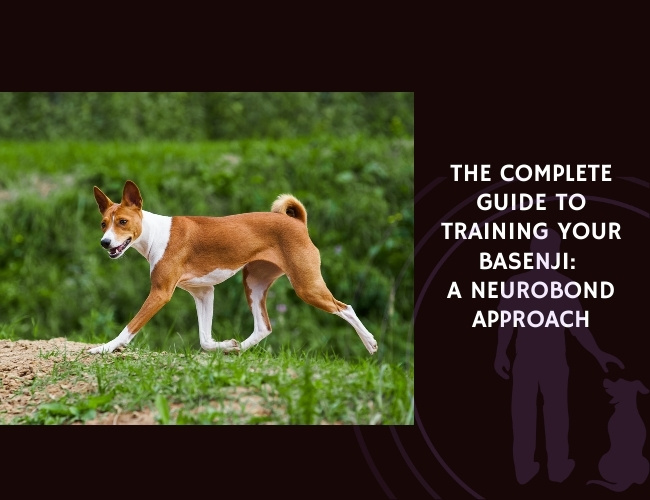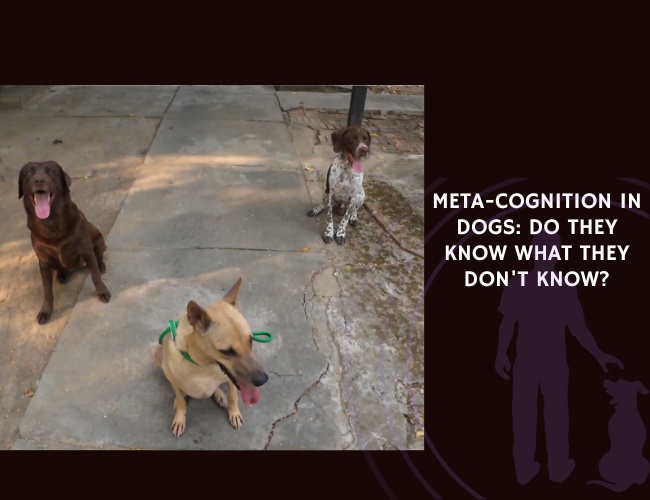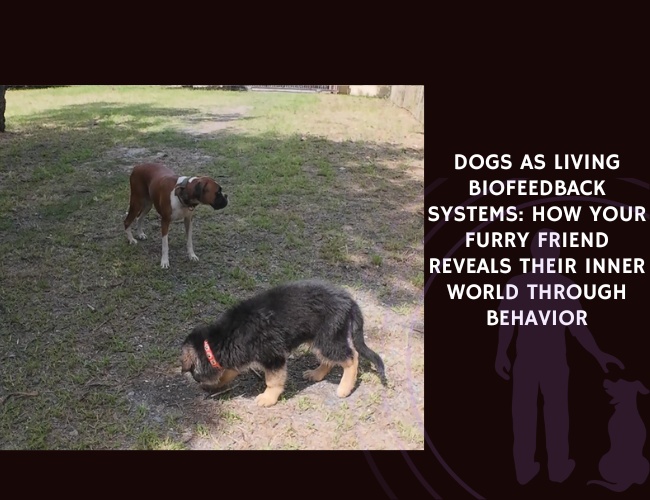Introduction: When Your Dog’s World Doesn’t Go As Planned
Have you ever watched your dog’s excited tail wag suddenly turn into confused pacing when their favorite toy is just out of reach? Or noticed how your usually gentle companion might bark insistently when dinner is five minutes late? You’re witnessing frustration in action – a complex emotional state that every dog owner needs to understand. This powerful emotion shapes not just momentary reactions but can fundamentally influence your dog’s long-term behavior, learning capacity, and even your precious bond together.
Frustration in dogs isn’t simply a minor inconvenience or a training challenge to overcome. It’s a window into your dog’s emotional world, revealing how they process expectations, cope with disappointment, and navigate the sometimes confusing human world we’ve invited them into. By understanding the intricate dance between expectation and reality in your dog’s mind, you’ll discover not just why certain behaviors emerge, but how to transform frustrating moments into opportunities for growth and deeper connection.
Let us guide you through the fascinating science of canine frustration, from the neural pathways lighting up in your dog’s brain to the practical strategies that can transform daily challenges into stepping stones for resilience. 🧠
Character & Behavior: Decoding Your Dog’s Frustration Signals
Understanding the Emotional Landscape
When we talk about frustration in dogs, we’re exploring a distinct emotional state that goes beyond simple stress or momentary annoyance. Your dog experiences frustration when their goal-directed behavior gets interrupted – imagine them as having a mental map of “if I do this, then that happens,” and frustration erupts when this map suddenly doesn’t work anymore.
The Physical Signs You Might Notice:
- Increased heart rate and restlessness
- Sudden changes in body posture, from relaxed to tense
- Dilated pupils and heightened alertness
- Rapid breathing or panting without physical exertion
But here’s what makes frustration unique: unlike fear, which causes withdrawal, or pure aggression, which drives confrontation, frustration sits in that uncomfortable middle ground. Your frustrated pup might whine while simultaneously wagging their tail, or paw at you while backing away – they’re caught between wanting something and not knowing how to get it.
Behavioral Markers That Tell the Story: The beauty of understanding frustration lies in recognizing its many faces. Your dog might express this emotion through whining that escalates in pitch, almost like they’re asking “why isn’t this working?” They might engage in displacement behaviors – suddenly scratching themselves or yawning when neither is really needed. These aren’t random actions; they’re your dog’s way of managing internal conflict.
Some dogs redirect their frustration onto nearby objects, which is why that innocent couch cushion might become a casualty when you’re late with dinner. Others might show what we call “extinction bursts” – a dramatic increase in the behavior they’ve learned should work, like sitting extra hard or offering every trick they know in rapid succession.
The Breed and Temperament Factor
Not all dogs wear their frustration the same way, and this is where individual personality shines through. Research reveals fascinating connections between temperament and frustration sensitivity. Dogs with naturally fearful dispositions often show heightened frustration responses, particularly when faced with novel situations. It’s as if their emotional baseline is already elevated, leaving less room for managing additional stress.
Consider the high-energy herding breeds – Border Collies, Australian Shepherds, and their cousins. These intelligent workers were bred for jobs requiring sustained focus and problem-solving. When their expectations aren’t met, their frustration can manifest as obsessive behaviors or redirected herding of inappropriate targets (yes, that includes your children or cats).
Meanwhile, dogs showing ADHD-like behaviors – characterized by hyperactivity, impulsivity, and attention challenges – often have lower concentrations of serotonin and dopamine. These neurochemical differences mean they might escalate from mild frustration to intense reactions more quickly than their calmer counterparts. Understanding your dog’s baseline temperament helps you anticipate and manage frustration before it spirals. 🐾
Vocalization & Communication: How Your Dog “Talks” About Frustration
The Language of Unmet Expectations
Your dog’s voice changes when frustration sets in, and learning to decode these vocal variations can transform your understanding of their emotional state. That plaintive whine isn’t just noise – it’s communication, often starting low and gradually increasing in pitch as frustration builds. You might notice it sounds almost question-like, as if your dog is literally asking, “Why isn’t this working the way it usually does?”
The Frustration Vocabulary:
- Demand barking: Sharp, repetitive barks with brief pauses, often accompanied by direct eye contact
- Frustration whining: Higher-pitched than attention-seeking whines, with irregular patterns
- Grumbling or groaning: Low-frequency vocalizations that signal mild irritation before escalation
- Yodel-like sounds: Some breeds produce unique frustration vocalizations that sound almost conversational
But here’s where it gets interesting – silence can speak volumes too. A dog who typically vocalizes but suddenly goes quiet might be experiencing learned helplessness, a concerning state where repeated frustration has taught them that nothing they do matters.
Body Language: The Silent Scream
While your dog’s voice tells one story, their body writes another chapter entirely. Frustrated dogs often display what ethologists call “conflicted body language” – simultaneous signals of approach and avoidance that reveal their internal struggle.
Watch for the tell-tale combination of a forward-leaning upper body (showing interest and desire) paired with back legs positioned for retreat (indicating uncertainty). Their tail might wag in short, stiff movements at mid-height – neither the low wag of uncertainty nor the high wag of confidence. This “frustration wag” tells you your dog is emotionally stuck between wanting and not getting.
The mouth tells its own story during frustration episodes. You might observe excessive lip-licking, not from hunger but from stress. Some dogs will “air snap” – biting at nothing in particular, almost like they’re trying to grab the solution to their problem from thin air. These displacement behaviors serve as emotional pressure valves, helping your dog cope with the uncomfortable feeling of thwarted expectations.
Training & Education: Building Frustration Tolerance
The Neuroscience of Learning Under Pressure
Understanding how your dog’s brain processes frustration during training sessions can revolutionize your approach to education. When expectations are violated, the dopaminergic system generates what scientists call “reward prediction errors” – essentially, your dog’s brain is recalculating, trying to understand why the usual formula didn’t work.
This recalculation process is actually where learning happens, but only if managed correctly. Too much frustration floods the system with stress hormones, shutting down the learning centers of the brain. Too little challenge, and there’s no growth. The sweet spot? Mild, manageable frustration followed by success – this combination builds what we call “cognitive flexibility.”
Creating Resilient Learners: Start with what behavioral scientists call “errorless learning” – setting up situations where your dog is almost guaranteed to succeed. Once this foundation is solid, gradually introduce small challenges. For instance, if your dog knows “sit,” try asking for it in a slightly more distracting environment. The momentary confusion (“Wait, does sit mean the same thing here?”) followed by success (“Yes! I figured it out!”) builds confidence and frustration tolerance simultaneously.
The magic lies in what researchers term “variable reinforcement schedules.” Unlike fixed schedules (treat every time), variable schedules (treat sometimes) actually build greater persistence and frustration tolerance. Your dog learns that rewards might not come immediately but will come eventually – a powerful life lesson wrapped in a training technique.
Timing: The Invisible Hand of Training
Handler timing can make the difference between a frustrated, confused dog and an eager, confident learner. Research reveals that dogs process cause and effect within a remarkably narrow window – typically 0.5 to 4 seconds. Miss this window, and your dog might not connect their behavior with the outcome, leading to frustration.
But timing isn’t just about speed; it’s about consistency and clarity. Imagine your dog’s mind as constantly asking, “What did I do to make that happen?” When your timing is precise and consistent, the answer is clear. When it’s erratic, your dog experiences the canine equivalent of trying to solve a puzzle where the rules keep changing.
The Clear Communication Formula:
- Cue delivery: Consistent tone, volume, and body language every time
- Response window: Allow 3-5 seconds for your dog to process and respond
- Marker timing: Mark the desired behavior within 0.5 seconds
- Reward delivery: Follow through within 3 seconds of marking
This formula becomes even more critical when working with frustration-prone dogs. Clear, predictable patterns provide the emotional scaffolding they need to manage their expectations and emotions effectively.
Performance & Activities: Channeling Frustration Into Achievement
Structured Activities as Emotional Outlets
Your dog’s frustration doesn’t have to be a negative force – when properly channeled, it can become the driving energy behind impressive achievements. The key lies in providing structured activities that allow controlled exposure to challenges while ensuring eventual success.
Consider puzzle feeders and interactive toys. These tools create what behaviorists call “constructive frustration” – your dog must work for their reward, experiencing mild frustration that motivates problem-solving rather than emotional dysregulation. Start with simple puzzles and gradually increase complexity as your dog’s tolerance builds. Watch how their approach changes: initial frantic pawing often evolves into thoughtful, methodical problem-solving.
Sport and Frustration Management: Canine sports offer incredible opportunities for building frustration tolerance in a positive context. Agility training, for instance, requires dogs to control their impulses (not taking the closest obstacle), follow complex sequences (even when another path seems easier), and cope with mistakes (knocking a bar or missing a contact). Each minor frustration, followed by eventual success, strengthens emotional resilience.
Nose work and scent detection activities tap into your dog’s natural abilities while building persistence. The dog must continue searching even when the scent seems elusive, learning that persistence through frustration leads to the ultimate reward. This transfers beautifully to everyday life – a dog who’s learned to work through frustration in training is better equipped to handle daily disappointments.
Environmental Enrichment: Preventing Frustration Build-up
A well-enriched environment acts as a buffer against frustration by providing multiple outlets for natural behaviors and mental stimulation. Think of it as emotional cross-training – the more ways your dog has to engage with their world, the less likely any single frustration will overwhelm them.
The Enrichment Prescription:
- Rotational toy system: Keep 3-4 sets of toys, rotating weekly to maintain novelty
- Sniffing opportunities: Hide treats or kibble around the house for “hunting”
- Varied textures and surfaces: Different walking surfaces engage the mind
- Social variety: Controlled interactions with different dogs and people
- Novel experiences: New routes, new smells, new (safe) challenges
Dogs living in enriched environments show lower baseline stress levels and better cognitive flexibility when facing challenges. They’ve learned that the world offers multiple paths to satisfaction, so a single blocked path doesn’t trigger the same intense frustration as it might in a dog with limited experiences.
Frustrated. Blocked. Misunderstood.
Frustration is an emotional roadblock. Dogs don’t just react to stress; they wrestle with unmet expectations that interrupt their inner maps of how the world should work. This break between intention and outcome sparks confusion, agitation, and the behaviors you see as barking, pacing, or whining.
Behavior is the visible signal. What looks like stubbornness or aggression often masks a deeper conflict inside your dog. Every paw step, every sharp bark is their attempt to solve a puzzle that no longer makes sense to them.

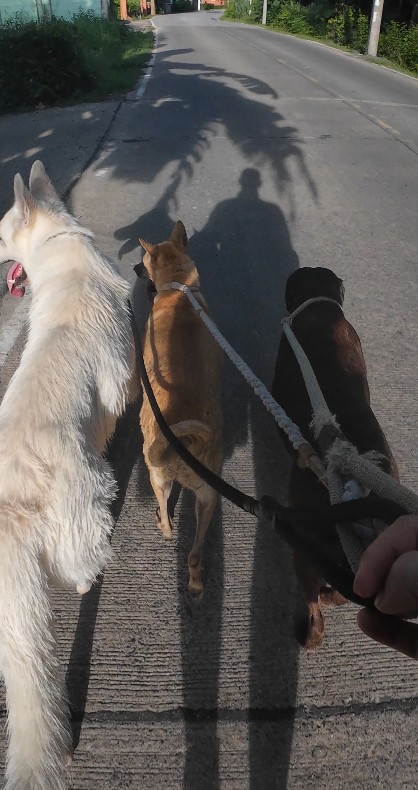
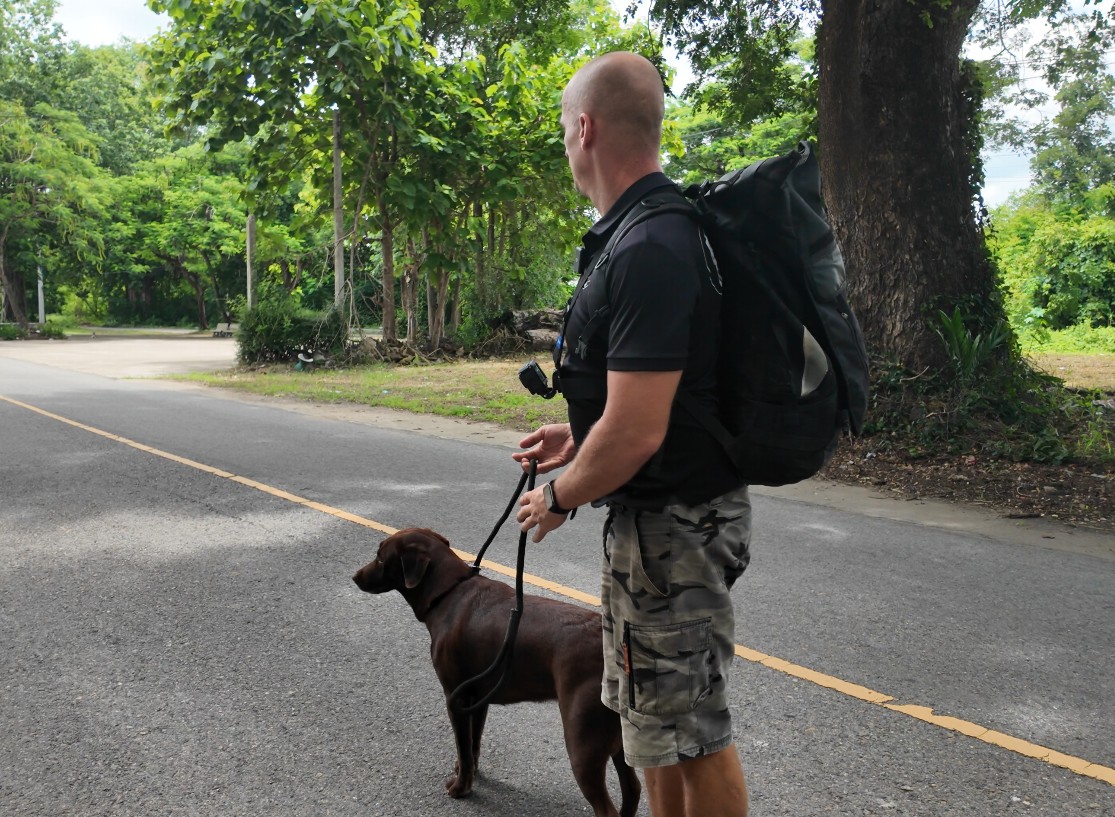
Connection transforms frustration into growth. When you step in with empathy and guidance, you don’t just stop unwanted reactions—you reshape how your dog interprets setbacks. This builds resilience, deepens trust, and creates a bond that turns challenges into shared victories.
Nutritional Recommendations: Feeding the Frustrated Brain
The Neurochemical Menu
What your dog eats directly influences their ability to manage frustration. The brain’s neurotransmitter production depends on specific nutrients, and deficiencies can exacerbate emotional volatility. Serotonin, your dog’s natural mood stabilizer, requires adequate tryptophan from the diet. Dopamine, crucial for motivation and reward processing, needs tyrosine and specific B vitamins.
Dogs exhibiting ADHD-like behaviors and heightened frustration often show lower serum concentrations of both serotonin and dopamine. While we can’t simply supplement our way out of behavioral issues, ensuring optimal nutrition provides the foundational support for emotional regulation.
Brain-Boosting Nutrients:
- Omega-3 fatty acids (particularly DHA): Support neural membrane health and reduce inflammation
- B-complex vitamins: Essential for neurotransmitter synthesis
- Antioxidants (Vitamins E and C): Protect against oxidative stress that can impact mood
- Quality proteins: Provide amino acid precursors for neurotransmitters
- Magnesium: Helps regulate the stress response system
The timing of meals also matters. Dogs fed on irregular schedules show higher stress markers and more frustration-related behaviors around feeding times. Consistent meal timing helps regulate not just hunger but emotional expectations, reducing one common source of daily frustration.
The Gut-Brain Connection
Emerging research reveals fascinating connections between gut health and emotional regulation. The gut microbiome produces neurotransmitters and influences the vagus nerve, directly impacting your dog’s stress response and frustration tolerance. Probiotic supplementation has shown promise in reducing anxiety-like behaviors in some dogs, though more research is needed.
Consider incorporating fermented foods (in small amounts) or high-quality probiotic supplements, especially during periods of heightened stress or after antibiotic treatment. A healthy gut contributes to a more balanced emotional state, providing a buffer against frustration triggers. 🧡
Health Concerns: When Frustration Signals Deeper Issues
Medical Masqueraders
Sometimes what looks like frustration is actually your dog’s way of communicating physical discomfort or medical issues. Pain, in particular, lowers frustration tolerance dramatically. A dog with arthritis might show “frustration” when asked to perform previously easy commands, not from disobedience but from physical limitation.
Hidden Health Triggers:
- Thyroid dysfunction: Can cause irritability and reduced frustration tolerance
- Chronic pain conditions: Lower the threshold for emotional regulation
- Vision or hearing loss: Creates confusion that manifests as frustration
- Dental disease: Makes eating frustrating and painful
- Gastrointestinal issues: Create chronic discomfort affecting mood
Regular veterinary check-ups become even more important if you notice increased frustration behaviors, especially if they appear suddenly or in senior dogs. What might seem like a behavioral issue could be your dog’s way of saying, “Something hurts, and I don’t know how to tell you.”
The Stress-Health Spiral
Chronic frustration doesn’t just affect behavior – it impacts physical health through sustained stress responses. Elevated cortisol levels from persistent frustration can suppress immune function, impair digestion, and even affect cognitive function over time. You might notice your frequently frustrated dog developing recurring skin issues, digestive problems, or seeming to age faster than expected.
The amygdala, your dog’s emotional alarm system, can become hypersensitive with repeated frustration exposure. This creates a vicious cycle: heightened emotional reactivity leads to more frequent frustration, which further sensitizes the stress response system. Breaking this cycle requires addressing both the behavioral and physiological components simultaneously.
Supporting Stress Recovery:
- Regular, predictable exercise routines
- Adequate sleep in a quiet, safe space
- Stress-reduction techniques like massage or TTouch
- Calming supplements (L-theanine, adaptogenic herbs) under veterinary guidance
- Environmental modifications to reduce triggers
Lifestyle & Environment: Creating a Frustration-Resilient Life
The Predictability Paradigm
Dogs thrive on predictability, and a well-structured environment significantly reduces frustration triggers. This doesn’t mean rigid inflexibility but rather creating reliable patterns your dog can count on. Think of it as providing a secure emotional framework within which your dog can confidently explore and occasionally face challenges.
Your daily routine becomes your dog’s emotional map. Regular wake times, consistent meal schedules, predictable walk times – these aren’t just conveniences but emotional anchors that help your dog navigate their day with confidence. When the framework is solid, occasional variations become manageable adventures rather than sources of anxiety and frustration.
The Routine That Reduces Frustration:
- Morning ritual: Same sequence of events each day (bathroom, breakfast, walk)
- Quiet periods: Designated rest times when your dog isn’t expected to engage
- Training windows: Brief, regular sessions at consistent times
- Evening wind-down: Calming activities before bed
- Weekend variations: Planned and gradual, not sudden disruptions
Social Dynamics and Frustration
Multi-dog households present unique frustration challenges. Resource competition, even when subtle, creates ongoing low-level stress that can suddenly explode into frustration-driven conflicts. Understanding and managing these dynamics is crucial for household harmony.
The concept of “social frustration” emerges when dogs can see but not access social rewards – watching other dogs play through a window, hearing but not joining neighborhood dog gatherings, or being prevented from greeting every dog on walks. This requires careful management and alternative outlet provision.
Managing Multi-Dog Dynamics:
- Individual attention time for each dog
- Separate feeding stations to prevent competition
- Multiple resource points (water bowls, toys, resting spots)
- Structured group activities with clear rules
- Recognition and respect for individual space needs
Remember, your own emotional state profoundly influences your dog’s frustration levels. Dogs are emotional barometers, picking up on human stress and anxiety. A calm, confident handler provides the emotional regulation support that helps dogs manage their own frustration more effectively.
Senior Care: Adapting to Changing Frustration Patterns
The Aging Brain and Emotional Regulation
As your dog enters their golden years, their frustration dynamics often shift in complex ways. Cognitive decline can make previously simple tasks confusing, while physical limitations create new sources of frustration. Yet senior dogs also often show increased emotional depth and may develop more sophisticated coping mechanisms – if supported properly.
The aging canine brain undergoes changes that directly impact frustration tolerance. Decreased dopamine production can affect motivation and reward processing, while changes in the prefrontal cortex may impact impulse control. Some senior dogs show increased irritability, while others develop a sort of learned patience. Understanding your individual senior dog’s changing needs is crucial.
Supporting Senior Emotional Health:
- Cognitive enrichment: Gentle puzzle games adapted for physical limitations
- Routine flexibility: Maintaining structure while accommodating slower processing
- Environmental modifications: Ramps, non-slip surfaces, easily accessible resources
- Patience practices: Allowing extra time for responses and decisions
- Comfort prioritization: Ensuring pain management and physical comfort
Canine Cognitive Dysfunction and Frustration
Canine Cognitive Dysfunction (CCD), similar to dementia in humans, can dramatically alter frustration patterns. Dogs might become frustrated by previously familiar situations, forget learned coping mechanisms, or show increased anxiety and confusion. The key is distinguishing between frustration from cognitive decline versus other causes.
Signs that frustration might be CCD-related include getting “stuck” in corners, appearing frustrated by familiar family members, or showing confusion about previously well-known routines. These dogs need extra support, patience, and often medical intervention to maintain quality of life.
Management strategies focus on reducing confusion while maintaining gentle stimulation. Simple, consistent routines become even more important, while new challenges should be introduced very gradually, if at all. The goal shifts from building frustration tolerance to minimizing frustration triggers while maintaining dignity and comfort. 😄
Conclusion: Is Your Dog’s Frustration Trying to Tell You Something?
After exploring the complex landscape of canine frustration, from neural pathways to daily management strategies, one truth emerges clearly: frustration isn’t just a problem to solve but a communication to understand. Every whine, every redirected behavior, every moment of confusion is your dog trying to navigate the sometimes bewildering world we’ve asked them to live in.
The journey through understanding frustration dynamics reveals that our dogs are far more emotionally sophisticated than we might have imagined. They form expectations, experience disappointment, and must constantly recalibrate their understanding of how the world works. Yet within this challenge lies opportunity – the chance to build resilience, deepen trust, and create a more harmonious life together.
Your Next Steps Forward:
Consider starting with a “frustration audit” of your dog’s daily life. Where do you see signs of unmet expectations? Which situations consistently trigger frustration responses? Understanding these patterns is the first step toward transformation.
Remember that building frustration tolerance is a gradual process, not a destination. Every small success – every moment your dog works through mild frustration to achieve a goal – adds another layer of emotional resilience. Be patient with setbacks; they’re part of the learning journey for both of you.
Most importantly, see frustration as a shared experience rather than a training failure. When you recognize your dog’s frustrated signals and respond with understanding and appropriate support, you’re not just managing behavior – you’re building a relationship based on mutual trust and clear communication.
Your dog’s frustration dynamics are unique, influenced by their genetics, history, and daily experiences. By understanding the science behind these emotional responses and applying thoughtful management strategies, you’re giving your furry friend the tools they need to navigate life’s disappointments with grace and resilience.
The path forward isn’t about eliminating frustration entirely – that’s neither possible nor desirable. Instead, it’s about creating a life where frustration becomes a manageable challenge rather than an overwhelming force, where your dog trusts that even when expectations aren’t immediately met, you’re there to guide them through. In this partnership, frustration transforms from a barrier into a bridge, connecting you and your dog in an ever-deepening understanding of each other’s worlds. 🐾

